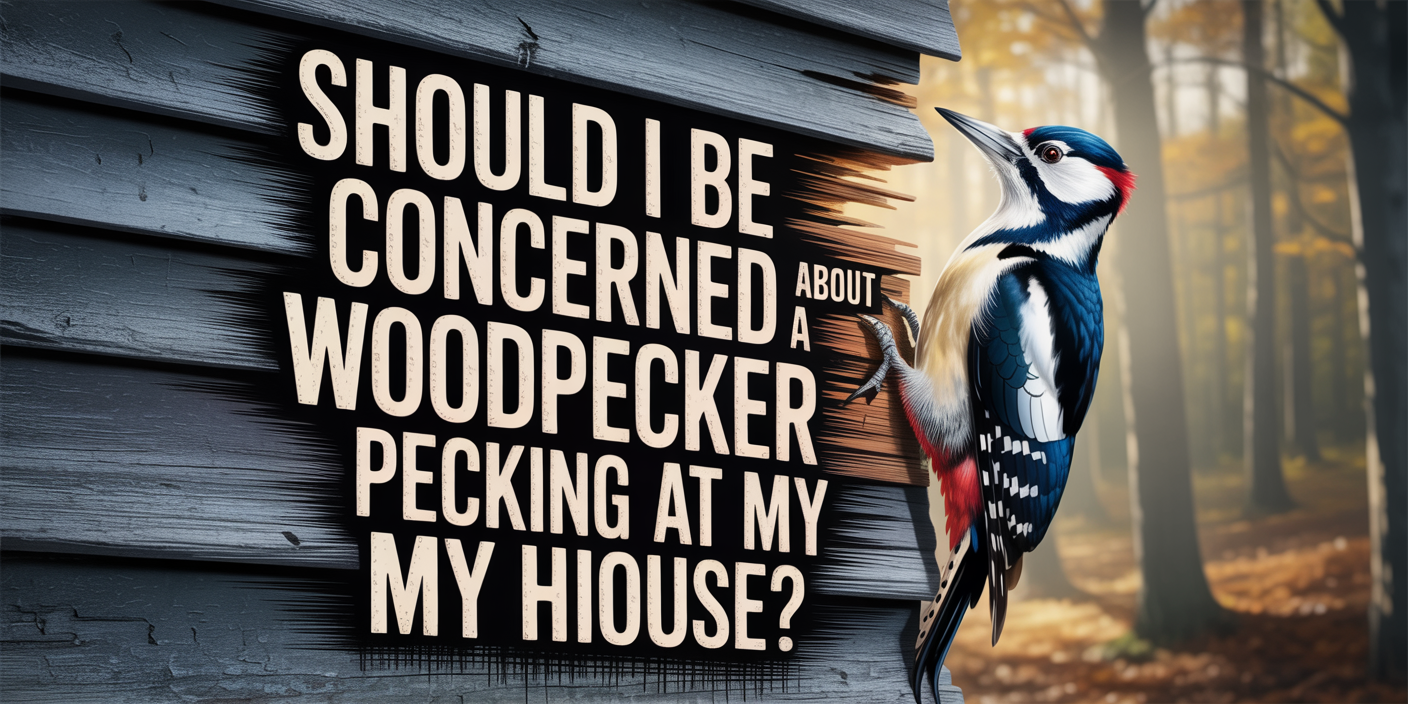“Yes, you should be concerned. A woodpecker pecking at your house isn’t just noisy—it’s a sign of potential damage that can let in moisture, pests, and costly repairs if ignored.”
That constant pecking outside your window might seem harmless—or just plain annoying—but it could be a much bigger issue than you think. When a woodpecker targets your home, it’s usually not by accident. These birds aren’t just looking for a place to drum out a beat; they’re either hunting insects hiding behind your siding, trying to carve out a nesting spot, or staking claim to their territory. And in the warm, insect-rich environment of Florida’s Treasure Coast, woodpecker activity around homes is more common than many homeowners realize.
While it might start with a few small holes or early-morning tapping, woodpecker damage can quickly escalate into something more destructive and expensive. Left unchecked, those holes can expose your home to water damage, mold, and even other wildlife pests. That’s why it’s important to understand what this behavior means, what it can lead to, and how local professionals like AAAC Wildlife Removal of Treasure Coast can help you take action before the problem gets worse.
Learn more: What is the most effective woodpecker deterrent?
Why Do Woodpeckers Peck at Houses in the Treasure Coast?
Woodpeckers don’t just pick a house at random. They’re usually drawn to homes that offer three things: food, shelter, or a good spot to make noise. Insect-infested siding, hollow wood, or even the natural acoustics of your gutters can attract these birds to peck persistently. On the Treasure Coast, the combination of humidity and wood siding creates an ideal environment for insects, which in turn invites hungry woodpeckers to start drilling.
Another reason? Communication. Male woodpeckers drum on hard surfaces to attract mates or mark territory. If your home happens to amplify that drumming sound, it could become a preferred billboard for a very determined bird. Homes with cedar, pine, or stucco are especially vulnerable since these materials mimic natural trees the birds would typically go after in the wild.
Can a Woodpecker Really Damage My House?
Yes, and the damage can sneak up on you if you’re not paying attention. Woodpeckers can drill deep, round holes into wood siding, fascia boards, and even synthetic materials like EIFS (synthetic stucco). While the initial pecking might look minor, repeated activity in the same area weakens structural components and can cause cracks, gaps, or larger holes over time.
Beyond the visible damage, these holes often invite even bigger problems. Moisture gets in, leading to rot and mold. Insects can enter, along with other pests like bats or squirrels. What starts as a small bird making noise can evolve into a full-blown home repair project—especially here on the Treasure Coast, where rain and humidity accelerate deterioration.
How Do I Know if It’s a Woodpecker and Not Something Else?
Listen for the Rhythm
Woodpeckers create a distinct tapping or drumming sound, usually early in the morning. It’s rhythmic and repetitive—not the random scurrying or scratching you’d hear from squirrels or rodents. The sound often echoes through gutters, chimney caps, or siding, which amplifies their message.
Look for Telltale Signs
Check for small, round holes arranged in straight lines or clusters, especially on wood siding, fascia, or trim. These marks are a signature of woodpecker activity. Unlike insect damage or rot, woodpecker holes tend to be clean and deliberate.
Know Your Local Woodpeckers
On the Treasure Coast, the most common species are the red-bellied, downy, and pileated woodpeckers. Red-bellied and downy types are smaller and cause minor surface damage, while pileated woodpeckers can carve out much larger holes. Spotting the bird in action or identifying the hole size can help narrow down what you’re dealing with.
Are Woodpeckers Protected by Law in Florida?
Yes, woodpeckers are federally protected under the Migratory Bird Treaty Act, which makes it illegal to trap, harm, or kill them—even if they’re actively damaging your property. This law applies across Florida, including the Treasure Coast, and violations can result in serious fines. That means handling a persistent woodpecker issue requires more than just good intentions; it requires legal awareness and the right approach.
While homeowners are allowed to use non-lethal deterrents like reflective tape, noisemakers, or visual decoys, anything that causes harm or forces the bird to leave through physical intervention is off-limits without a federal permit. That’s why it’s smart to involve licensed professionals from the start. AAAC Wildlife Removal of Treasure Coast understands the laws and has the credentials to deal with woodpeckers both humanely and legally, saving you from both damage and potential legal trouble.
What Are the Risks of Ignoring Woodpecker Damage?
- Structural Weakening- When woodpeckers keep pecking the same area, it’s not just a surface issue. Over time, repeated drilling can weaken your siding, fascia, or trim. On the Treasure Coast, where heat and humidity are constant, even small openings can quickly lead to rotting wood and warped materials.
- Water and Mold Intrusion- Those tiny holes may not look threatening, but they invite moisture inside. Rainwater can seep behind siding panels or fascia boards, especially during Florida’s wet season. Once moisture gets in, mold, mildew, and hidden decay can take hold fast.
- Secondary Pest Infestations- Abandoned woodpecker holes become prime real estate for other unwanted guests. Insects like bees and ants often move in first, followed by larger pests like bats or squirrels. Ignoring the issue can turn a minor woodpecker problem into a full-blown infestation—and a much bigger repair bill.
How Can I Humanely Get Rid of a Woodpecker?
Use Legal Deterrents
The best way to deter woodpeckers is to make your home visually and acoustically unappealing—without causing harm. Homeowners can hang reflective tape, shiny pinwheels, or even windsocks near the affected areas. These moving objects reflect light and create unpredictable motion that woodpeckers dislike. You can also use sound-based deterrents like wind chimes or predator calls to interrupt the drumming behavior, especially when a bird is trying to attract a mate or establish its territory.
Fix What’s Attracting Them
Woodpeckers often roost or drum in spots that have a food source underneath. In many cases, that means you might also have a carpenter bee or insect infestation in your siding. Treating your home for pests and repairing any soft or damaged wood will remove what drew the bird there in the first place. Replacing natural wood finishes or repainting sections with smooth, composite materials is another long-term way to deter woodpeckers and make your home less inviting.
Bring in a Wildlife Pro
If the same bird keeps returning or the damage is getting worse, it’s time to involve a professional. AAAC Wildlife Removal of Treasure Coast offers humane, legally compliant methods to deter woodpeckers and restore your home. Their team understands the behavior of Florida’s native birds and knows how to treat both the cause and the effect—ensuring the woodpeckers don’t come back.
When Should I Call a Professional Wildlife Control Company?
If you’re starting to see new holes popping up regularly or hearing that familiar pecking in the same spot each morning, it’s time to act. The longer a woodpecker is allowed to treat your home as its personal territory, the more difficult and costly it becomes to reverse the damage. Early signs like clustered holes, insect activity, or persistent bird presence around your roofline shouldn’t be ignored.
DIY deterrents like reflective tape or decoys can work in mild cases, but when they fail to stop the bird’s behavior, you need expert help. Some woodpeckers are highly territorial and return season after season. That’s where AAAC Wildlife Removal of Treasure Coast comes in. Their licensed professionals understand what’s attracting the bird, how to legally deter it, and how to prevent repeat visits using long-term exclusion techniques tailored for Florida homes.
On the Treasure Coast, where weather, construction styles, and native wildlife all play a role, local expertise makes a big difference. AAAC serves Port St. Lucie, Vero Beach, Palm City, and nearby communities with fast response and proven results—so you’re not stuck dealing with damage year after year.
What Does AAAC Wildlife Removal of Treasure Coast Do About Woodpeckers?
When woodpeckers start turning your home into a nesting or feeding ground, AAAC Wildlife Removal of Treasure Coast steps in with a process that’s fast, humane, and fully legal. The first step is a thorough inspection to confirm the damage is from a woodpecker and not another pest. From there, the team identifies what’s attracting the bird—whether it’s insects in your siding, ideal acoustics, or nesting opportunities—and builds a strategy to stop the behavior.
That strategy often includes a combination of visual deterrents, minor repairs, and exclusion techniques to prevent the bird from returning. Because woodpeckers are protected by law, AAAC uses methods that comply with the Migratory Bird Treaty Act while still delivering long-term results. Their team also offers repair services for any pecking damage, helping you restore your home’s appearance and keep other pests from moving in through the same entry points.
Backed by years of experience handling Florida wildlife, AAAC knows how to respond quickly across the Treasure Coast—from Fort Pierce to Vero Beach and beyond. Their local expertise means you’re not getting guesswork—you’re getting proven solutions.
Can I Prevent Woodpeckers from Coming Back?
Yes, but it takes a mix of smart deterrents, regular maintenance, and removing what attracted them in the first place. If a woodpecker found insects in your siding or was using your home to amplify its drumming, you’ll want to fix those issues quickly. That might mean treating for pests, repairing holes, or switching out materials that mimic dead trees—like natural wood panels or exposed trim.
Ongoing deterrents such as reflective objects, bird netting, or even motion-activated noise devices can help keep them away without breaking the law. Just as important is staying ahead of the damage. In the Treasure Coast’s warm, damp climate, wood rot and insect infestations happen fast. Regularly inspecting your home’s exterior and sealing off weak spots will help you stay one step ahead of the next determined bird.
Conclusion: Don’t Let a Woodpecker Turn Into a Bigger Problem
When woodpeckers peck at your house, that tapping isn’t just a nuisance; it’s a warning that damage is already underway. These birds drill holes that invite moisture, insects, and rot, so learn how to stop woodpeckers early if you want to keep woodpeckers away and safeguard your Treasure Coast home.
AAAC Wildlife Removal of Treasure Coast is the local pest control company you can rely on for humane, legal, and fast help. Their wildlife specialists combine proven pest control tactics with expert repairs to seal entry points and prevent future visits, delivering lasting peace of mind from Port St. Lucie to Vero Beach.




